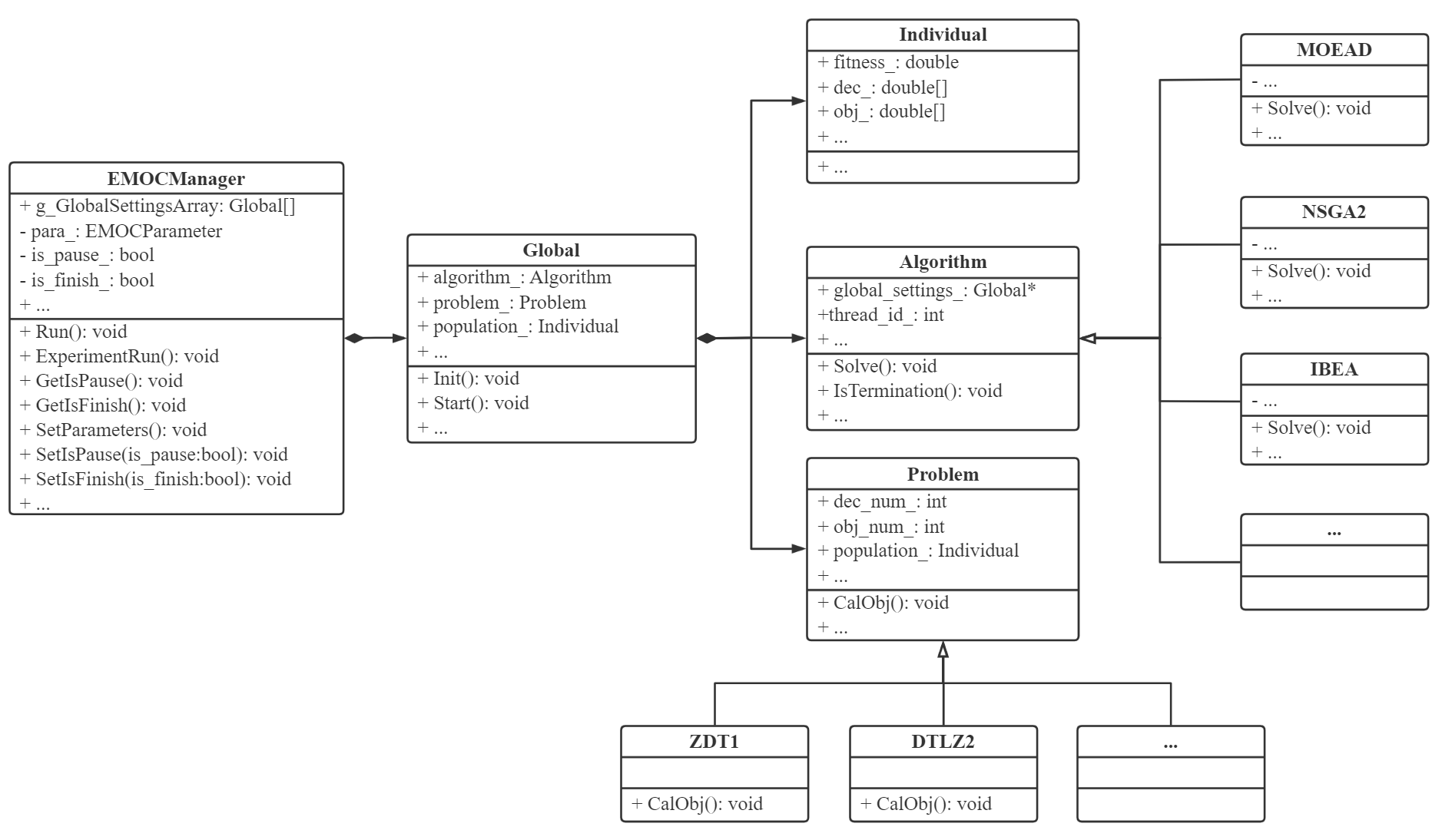Architecture of EMOC #
Before we dive into the details and functions of some core classes, let’s take a look at the architecture of EMOC.
File Structure #
After going into the source code directory ’/EMOC/src’, users can see a lot of .h and .cpp files organized in a structure shown below.

There are one ‘main.cpp’ file and six folders in the ’/src’ directory of EMOC. It is very easy to find the implementation details of specified algorithms, problems, operators and metrics in each folders. The ‘main.cpp’ file is the entry point of EMOC. The first folder ’/core’ contains some basic classes and important functions. The second folder ’/problem’ has a lot of subfolder for different test problems. For example, the subfolder ’/uf’ contains 10 UF problems (i.e., UF1~10). The next folder ’/algorithm’ is used to store all the algorithms in EMOC, where each algorithm has an independent subfolder. All the relevant functions are member functions of the specified algorithm class. The ’/operator’ and ’/metric’ folder store the functions of all the operators and performance indicators, respectively. The last folder ’/ui’ stores the classes of interactive GUI of EMOC.
Class Diagram #
EMOC also has a simple architecture where it involves some core classes structured as below.

The leftmost class EMOCManager is the manager class of EMOC which controls the command mode and GUI mode. It contains some basic state variables of EMOC such as pause or not in GUI mode. EMOCManager class also has an array of Global class. A Global object is an execution entity of EMOC which basically is a specified algorithm optimized a certain problem with pre-defined parameters. All the relevant datas are stored in it. The following class is Individual that represents a solution of population. The last two classes Algorithm and Problem are parent classes of all the algorithms and problems respectively. They provide some useful interfaces and declared a few virtual functions that need to implemented by their subclasses.
All the details of these core classes will be introduced in the following sections.